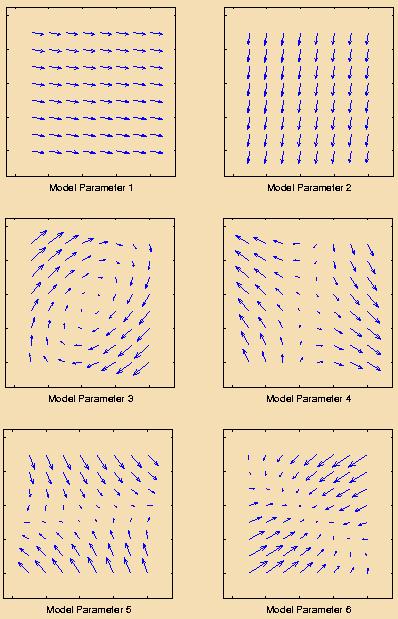

| News | |
| QuikScat | |
| NSCAT | |
| YSCAT | |
| SAR Research | |
| SCP | |
| CERS | |
| Jason-1 | |
| Publications | |
| Software | |
| Studies | |
| Lab Resources | |
| Group Members | |
| Related Links | |
| Contact Us | |
| Getting to BYU | |
Wind Field ModelsAn important part of wind estimation is wind field modeling. Models are useful because they take into account the inherent correlation between neighboring wind vector cells. Various types of models have been explored for use in ocean wind estimation. The Karhunen - Loeve (KL) model, often used in image processing is especially effective because it minimizes the basis restriction error for a given set of second order statistics. Creating a KL wind field model The KL model is generated by taking the eigenvalue decomposition of the autocorrelation matrix. Specifically, the KL model for wind fields is formed in the following way:
The SeaWinds 8x8 KL model The KL model is used in field-wise estimation and in the point-wise quality assurance algorithm. The advantage of using a model is that it acts as a low pass filter to the wind suppressing the effects of noise in the measurements. The first 6 model parameters for the 8x8 KL model generated using SeaWinds data is shown in the following figure. 
|